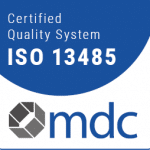Patient
The source of happiness is within us.
Q&A:
Find Answers to your Questions
A bone graft is a procedure that replaces and regenerates lost bone, and can also restore proper facial contour. If teeth have been lost due to trauma, rot and decay, or injury, some bone loss often occurs, and the bone around the jaw will begin to deteriorate
Extractions without the use of bone grafting will result in shrinkage of bone and gums, however these changes can be prevented by incorporating bone grafting material into the extraction sites.
If bone has been lost in your jaw, this procedure will help. Without the bone, you cannot receive dental implants. There are a number of reasons why a patient would need to have this type of procedure done. The biggest reason is due to gum disease. Many adults suffer from gum disease and they do not even know it. This is why it is so important for you to receive a routine dental checkup. When gum disease is not treated properly your jaw may even become misshapen as well due to adjustments and facial shifts when the bone is gone.
The bone grafting procedure is a routine procedure that is considered to be quite painless. Patients who do fear the procedure should not be afraid to explore their options and consider it. The procedure is not as bad as it sounds. In fact, this procedure is very beneficial to patients and can help them smile boldly once again. In addition to the benefits, there are always risks that come along with any procedure. While the risks are considered to be minimal at best, you still need to know about them to protect and prepare yourself.
The first risk associated with the procedure is that the bone graft will be rejected. It is not common and is unlikely to happen, but it could. In that case you will need to have the procedure performed again and you may need to seek out an alternative treatment.
Lastly, as in any other surgical procedure you might need to worry about swelling, infection, and bleeding once the procedure has been performed. If you ever feel like the symptoms have worsened, it is time to call your treating dentist.
By avoiding foods that may require chewing, patients can speed up their healing process. No matter what, during the first two to three weeks following surgery, it’s important to avoid eating hard, crunchy, or sharp foods so that they don’t get stuck in the graft site.
Ivory Dentin Graft™ is contraindicated under the following conditions: In the presence of acute inflammation, in patients with known or suspected hypersensitivity or allergy to porcine products and in patients affected by immunological disorders.
Some of the following relative contraindications should be discussed with your dentist: Serious bone diseases, Serious disturbances of bone metabolism, Ongoing treatment with glucocorticoids, mineralocorticoids or with agents affecting calcium metabolism (e.g., calcitonin), Severe or difficult to control diabetes mellitus, Irradiation therapy, chemotherapy or immunosuppressive therapy in the last 5 years and malignancies.


